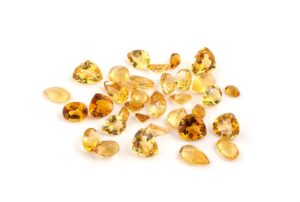 The history of the Citrine gemstone dates back many years ago. Citrine has been loved for thousands of years. The word was first used in 1385 to refer to yellow gemstones. Citrine is one of the November birthstones, and has become a symbol of manifestation, wealth, and imagination. Its yellow hues evoke the warmth of the sun and life-giving energy.
The history of the Citrine gemstone dates back many years ago. Citrine has been loved for thousands of years. The word was first used in 1385 to refer to yellow gemstones. Citrine is one of the November birthstones, and has become a symbol of manifestation, wealth, and imagination. Its yellow hues evoke the warmth of the sun and life-giving energy.
In ancient times, people believed that citrine gemstones could calm tempers, soothe anger, and manifest desires. To leverage these powers, Egyptians used citrine gemstones as talismans, the ancient Greeks carved iconic images into them, and Roman priests fashioned them into rings.
Citrine folklore says that the gemstone made men more handsome and intelligent. It was also believed that it could help women bear more children and increase happiness. Citrine is often called “The Merchant’s Stone.” People believed that it would help accumulate wealth and success.
According to the folklore and history of Citrine, carrying citrine would attract love and prevent heartbreak. It was believed that it could instill confidence and healing wisdom as well. People felt that it was one of the only stones that did not hold negative energy. Instead, it repelled it.
Today, citrine is one of the most affordable and abundant gemstones on the market. Its colors range from yellow, orange, and reddish hues, to smoky or amber brown, which makes for beautiful Citrine jewelry.
If you’re looking for a gift to celebrate a November birthday, or a 13th wedding anniversary, citrine jewelry is the perfect idea. Find an American Gem Society jeweler near you.
NOTE: The above is intended to educate on the myth, legend, and historical lore of citrine and is not meant to be interpreted as fact.